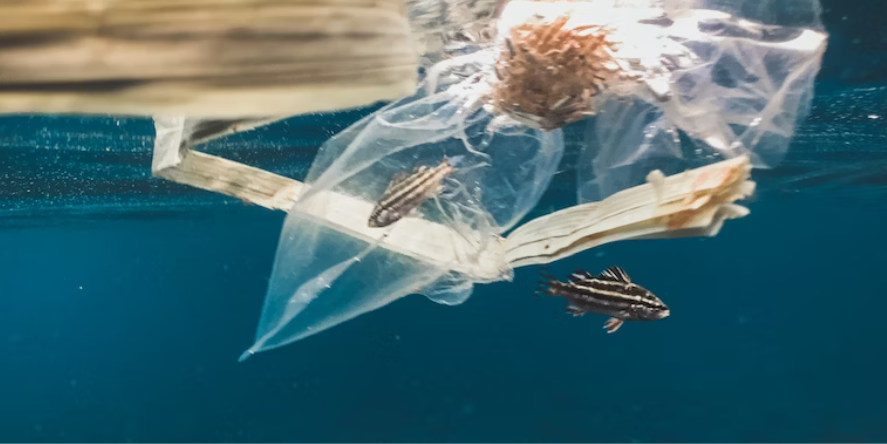Oceans and seas are home to innumerable marine species in this world. These species cannot survive without the ocean or seawater. But today, these species are endangered due to the poisonous plastic that pollutes the oceans and seas. According to the United Nations, at least 800 species throughout the globe are reportedly impacted by marine trash, which contains as much as 80 percent plastic. Up to 13 million metric tons of plastic are estimated to be dumped in the ocean annually, which is equal to one trash or waste truckload every minute.
Marine species such as fish, seabirds, sea turtles, marine mammals and plant species are all endangered by the pollution that has been caused by the dumped plastics in the seas and oceans. When these plastics are deposited in the water, the species inside feel suffocated, starved , and finally end up drowning.
Issues behind the pollution
Plastics are one of the most convenient materials mankind has created. It has helped people in unimaginable ways. By developing alternatives to plastic, the industry has transformed healthcare, increased the energy efficiency of dwellings, and eased the strain on the exploitation of natural resources like wood and cotton. Everywhere we’re surrounded by plastics; be it the consumer products that fill our stores and the single-use packaging we discard, to food packages and many more. But, slowly and gradually it started affecting our lives. It’s been a century now that plastics are affecting us and especially the marine life.
Plastic is a petroleum-based synthetic organic polymer with qualities that make it appropriate for a wide range of uses as mentioned above. But it has been reported that every year nearly 300 million tons of plastics are produced for several purposes. Among them, half of this is meant for producing one-time or single-use plastics for cups, plastic plates or glass cups or even shopping bags, straws and many more. There’s no harm in the usage of plastics but the only thing that hampers is the improper discarding of those plastics. If plastics are discarded improperly then it infects all of us; humans as well as animals and especially those living inwater. In other words, it affects the entire ecosystem.

It is a common belief that one straw or shopping bag plastic won’t cause any harm. But the usage of many plastics one after another is now causing stumbling blocks in our environment. Plastic debris or marine litter or human waste, are accidentally or deliberately released in the sea water or ocean. When these debris are sunk under the water it harms marine life. More than 100,000 marine animals are estimated to perish each year as a result of marine plastic pollution. Diverse effects of plastic pollution on marine life include entanglement, harm, chemical contamination, and ingestion. The size of the plastic is a key deciding element, since it can negatively impact various species in a variety of ways and over a variety of timelines, as plastics take more than 100 years to decompose and in the process they form microplastics too. Plastics are released in ocean water or dumped after accumulation to a certain place or near the banks of the river. This not only affects the sea animals but also humans.
Impact on Marine Life
The plastic debris found in oceans, seas or rivers are polluting the water and the marine ecosystem. This has become a global crisis now. As per reports, there are billions of pounds of plastic in the whirling convergences that comprise approximately 40% of the ocean’s surface. The impact of plastic has a direct and deadly effect on our marine wildlife. Reports say that each year, thousands of seabirds, sea turtles, seals, and other marine animals, globally, die from consuming or being entangled in plastic. Nearly 700 species of wildlife consume and become entangled in plastic waste, including endangered species like Hawaiian monk seals and Pacific loggerhead sea turtles.
As per reports, in the North Pacific, fish ingests 12000 to 24000 tons of plastics every year. This causes intestinal injury to the fish, which leads to their death. Moreover, this is also affecting the ecosystem, like when these fishes are consumed by a bigger fish, or marine mammals, it transfers plastics up the food chain. Furthermore, human seafood eaters also become victims to this plastic ingestion by consuming the fishes. In a recent study, it has been found that plastics are contained in fish guts, in the form of plastic microfibre, in a fish market of California.
There was a case of a grey whale in Seattle in 2010, that died after getting stranded near the shore. The whale was found with a golf ball, more than 20 plastic bags and other plastics or microplastic elements in its stomach. The whale was found with a little bit of plastic wrapper lodged in its intestines.

There have been numerous reports of marine animals dying as a result of plastic ingestion all over the world. When we talk about seabirds and sea turtles, these species often mistake plastic for their food and ingest it. They think they satisfy their appetite by eating plastic, but on the other hand they starve, suffer internal injury and die. According to recent research, there is so much plastic pollution on several beaches that it is even impairing these species’ reproduction cycle. Marine turtles are more likely to perish if they consume even 14 particles of plastic. Because they tend to consume less selectively than their elders and float with currents, just like plastic, young ones are particularly at risk. Scientists anticipate that by 2050, 99 percent of all seabird species would have consumed plastic in comparison to the current estimate of 60 percent.
Both large and tiny marine life are impacted by plastic pollution. From small seahorses that dwell on coral reefs to seabirds, whales, and dolphins as well as the fish schools that inhabit the same reefs and the neighbouring mangroves.
Conclusion
It is time to think and take action for marine animals and join the #BeatPlasticPollution movement. Plastic pollution not only impacts the sea animals but it’s harming humans too. In order to combat marine plastic pollution, efforts should be undertaken to uphold and improve current international regulatory frameworks. Governments at the regional and federal levels have to look at national legal frameworks for extended producer responsibility. These, as well as measures to support circular economies are emerging as creative, affordable alternatives. Businesses must be sued for using plastic to create consumer products to better manage their runoff. There should be more initiatives to reuse plastics or instead use paper. Not only governments, but individuals may make a significant difference by adopting reusable shopping bags, cups, straws, and water bottles, as well as by refusing to use plastic packaging and personal care items that contain microplastics.
Blog by Tasleem Majumder


















